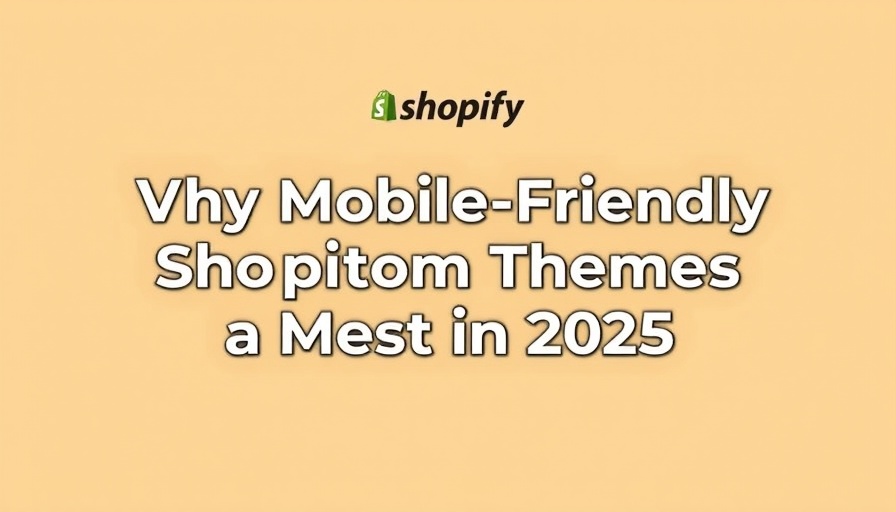
Why Mobile-Friendly Themes Are Crucial for Shopify Success
In an era where mobile commerce continuously ascends, businesses must prioritize mobile-friendly Shopify themes. As we approach 2025, statistics show that over 70% of e-commerce transactions are now conducted on mobile smartphones. This rapid shift necessitates a responsive approach to web design that not only appeals to a mobile audience but also ensures an optimal user experience.
The User Experience Revolution
Mobile-friendly designs offer seamless navigation, which significantly enhances user engagement. For instance, incorporating strategies such as Conversion Rate Optimization can lead to higher sales. Did you know that a mere one-second delay in mobile load time can lead to a 7% reduction in conversions? With mobile-friendly Shopify themes, businesses can minimize load times and offer an efficient checkout process.
Current Social Media Marketing Trends
Integrating your Shopify store with social media platforms has never been more critical. A recent survey indicated that 54% of social browsers use social media to research products before making a purchase. A mobile-friendly Shopify theme that seamlessly links to platforms like Instagram and Facebook can capture this trend by allowing users to buy directly from these channels, merging social media marketing with e-commerce.
AI and Personalization: The Future of E-Commerce
As we head into 2025, AI technologies are set to revolutionize how we approach e-commerce. By implementing mobile-friendly themes that can easily integrate AI-driven features, businesses can curate personalized shopping experiences based on customer data. This adaptability not only improves customer satisfaction but directly correlates with increased sales, making mobile optimization not just an option, but a necessity.
SEO Best Practices for Mobile
Mobile-first indexing means that Google favors mobile versions of websites for ranking. Therefore, mobile-friendly Shopify themes are not just about aesthetics; they are fundamental to effective SEO techniques. Optimizing your site for on-page elements such as mobile page speed, structured data, and optimizing for voice searches can significantly enhance visibility in search results.
Future-Proofing Your Business
Digital marketing trends indicate a continuous rise in mobile usage. Investing in mobile-responsive themes is a proactive approach to future-proofing your business. As online shopping behaviors evolve, staying ahead of trends such as progressive web apps (PWAs) and augmented reality (AR) shopping experiences will position your brand as an industry leader.
Practical Steps to Optimize Your Shopify Store
To effectively transition to a mobile-first approach, consider the following tips:
- Choose responsive themes: Select themes that adjust seamlessly across devices.
- Implement Accelerated Mobile Pages (AMP): This can enhance load speeds significantly.
- Prioritize user-friendly navigation: Ensure that your store is easy to browse with minimal clicks required to make a purchase.
- Optimize images: Make sure graphics are appropriately sized for mobile to improve speed.
- Utilize A/B testing: Continually test different layouts and features to determine what works best for your mobile audience.
Call To Action: Embrace the Change
As we look towards 2025, the importance of mobile-friendly Shopify themes cannot be overstated. The time to act is now. Evaluate your current website's mobile performance, consider these strategies, and make the necessary adjustments. The future of your online business depends on it!
 Add Row
Add Row  Add
Add 




Write A Comment